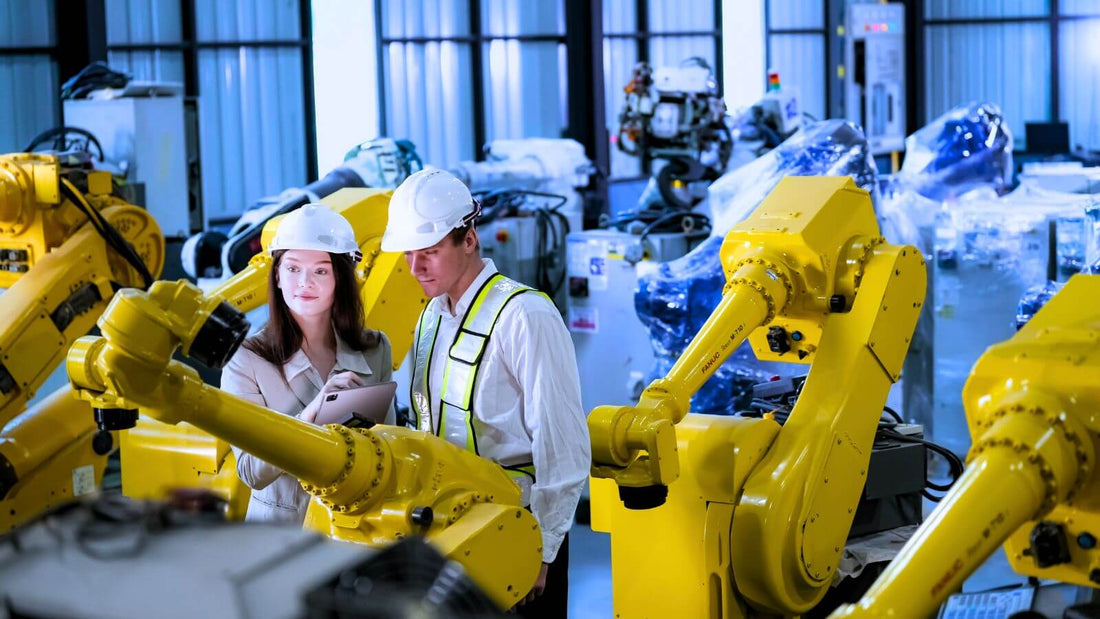
Emerging Technologies Reshaping the Intralogistics Market Landscape
Share

Introduction
The world of intralogistics—a cornerstone of modern supply chain management—is undergoing a seismic shift. As warehouses and distribution centers strive for greater efficiency, precision, and speed, advanced technologies are stepping in to revolutionize operations. From artificial intelligence (AI) and robotics to the Internet of Things (IoT) and blockchain, these innovations are not just enhancing workflows—they’re setting the stage for unprecedented growth and transformation in the sector.
According to a report by NMSC, the global intralogistics market, valued at $43.13 billion in 2023, is projected to skyrocket to $115.92 billion by 2030, growing at an impressive CAGR of 15.2%. For investors, this presents a golden opportunity to tap into a booming market driven by technological advancement and innovation.
Let’s delve into the emerging technologies that are reshaping the intralogistics landscape and their potential to deliver exceptional returns.
1. Warehouse Management Systems (WMS): The Backbone of Efficiency
Warehouse Management Systems (WMS) have become the linchpin of efficient intralogistics. These platforms integrate critical processes like inventory tracking, order processing, picking, and shipping, offering businesses real-time visibility and control.
For instance, Hy-Tek Intralogistics introduced its IntraOne Enterprise Logistics Platform, a comprehensive solution that combines WMS with conveyor control and warehouse execution functionalities. By optimizing storage, streamlining order fulfillment, and minimizing errors, WMS platforms are unlocking new levels of operational efficiency—a compelling value proposition for businesses and investors alike.
2. Internet of Things (IoT): Connecting the Warehouse Ecosystem
IoT is transforming warehouses into interconnected ecosystems. Using sensors, RFID tags, and beacons, IoT enables real-time tracking and monitoring of inventory, equipment, and vehicles.
A standout example is SSI SCHAEFER’s 5G integration, which enhances connectivity and operational efficiency through machine-to-machine communication. By leveraging IoT, businesses can optimize asset utilization, improve predictive maintenance, and reduce costs—key drivers of profitability in the intralogistics sector.
3. Autonomous Mobile Robots (AMRs): Redefining Material Handling
Autonomous Mobile Robots (AMRs) are revolutionizing material handling by automating tasks such as picking, transporting, and replenishing inventory. Equipped with advanced navigation systems, AMRs reduce labor costs, increase throughput, and enhance workplace safety.
Boston Dynamics’ Stretch, for example, is a mobile robot designed to streamline repetitive box-moving tasks in warehouses. Its versatility and adaptability make it a game-changer for automation, offering significant savings and operational enhancements.
4. Artificial Intelligence (AI) and Machine Learning (ML): Smarter Decisions, Better Outcomes
AI and ML are empowering warehouses with predictive analytics, intelligent decision-making, and enhanced order accuracy. By analyzing vast data sets, these technologies optimize inventory levels, forecast demand, and enable proactive maintenance.
Vanderlande’s Smart Item Robotics (SIR), integrated with AI, is a prime example. It handles a diverse range of items with precision, improving efficiency in order picking and reducing operational errors—an invaluable advantage in a competitive market.
5. Augmented Reality (AR) and Virtual Reality (VR): Transforming Training and Maintenance
AR and VR are redefining workforce training, operations, and maintenance in intralogistics. AR overlays digital instructions onto the physical environment, while VR offers immersive training simulations, enhancing worker proficiency and safety.
In 2023, Cimcorp’s CVision AR glasses debuted as a tool for real-time customer support, reducing downtime and maximizing the performance of automated solutions. Such innovations enhance operational resilience, making them a smart investment in a tech-driven future.
6. 3D Mapping: Optimizing Space and Flow
3D mapping technologies, like LiDAR and photogrammetry, are revolutionizing warehouse layout optimization. These tools enhance storage, streamline material flow, and facilitate automation implementation.
Slamcore’s Aware system, which integrates vision into Real-Time Location Systems (RTLS), is a standout example. By combining AI with industrial-grade hardware, it boosts safety and operational efficiency, delivering measurable ROI for businesses.
7. Blockchain: Ensuring Transparency and Trust
Blockchain technology is bringing transparency, security, and traceability to intralogistics. By establishing tamper-proof ledgers, blockchain enhances the tracking and verification of goods, transactions, and contracts, reducing fraud and ensuring compliance.
With Gartner predicting blockchain’s business value to surpass $3.1 trillion by 2030, its integration into intralogistics offers a transformative opportunity for stakeholders seeking secure and efficient solutions.
Conclusion
The intralogistics market is on the cusp of a technological renaissance. From foundational systems like WMS to cutting-edge innovations such as IoT, AMRs, and blockchain, the sector is poised for transformative growth. These advancements not only drive efficiency but also unlock unparalleled opportunities for investment.
For savvy investors, the intralogistics market represents a dynamic and resilient sector with immense potential for returns. As technology continues to reshape the landscape, investing in the companies driving these innovations ensures a stake in the future of supply chain management—one defined by efficiency, intelligence, and sustainability.